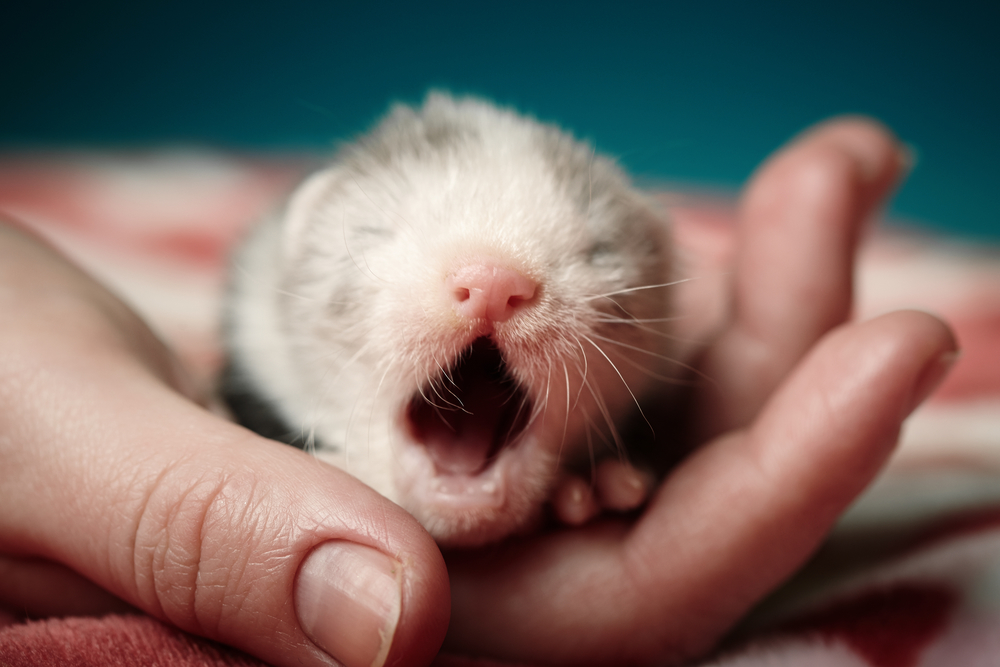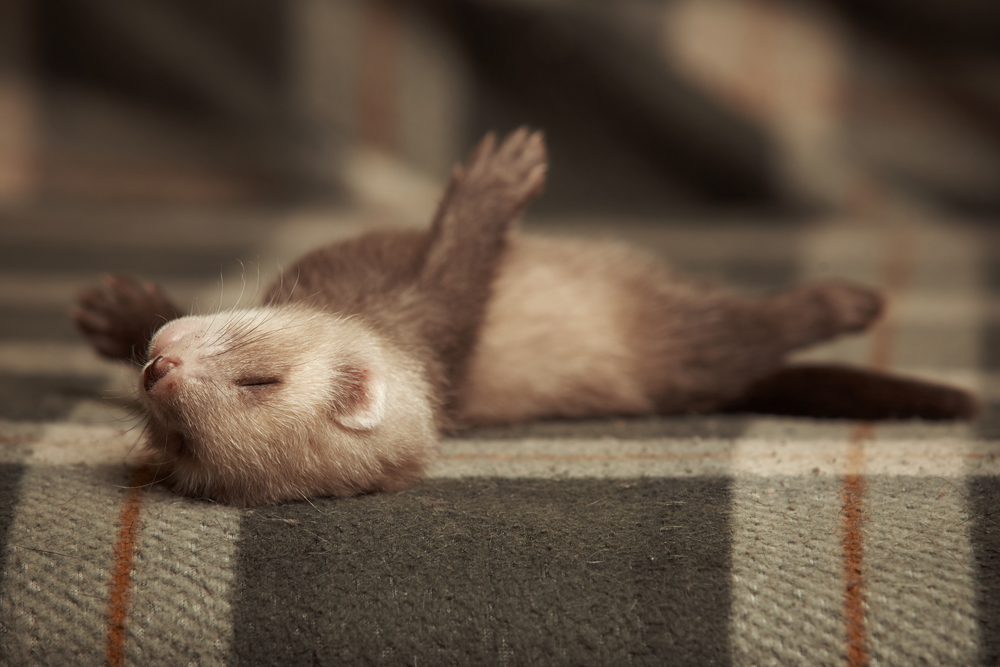Indoor cages for ferrets should be large enough to allow the ferret to play and move freely. Sturdy metal or plastic-coated wire cages are ideal, so long as the bars are securely welded to the frame. The cage slats should be small enough that the ferret cannot get out, and any door openings need to be firmly latched. The cage location should be climate controlled, as ferrets are susceptible to illness from very cold or very hot temperatures. The room where the cage is located should also be thoroughly ferret proofed in case of escape from the enclosure. Small openings, doorways and windows must be secured: furniture and flooring should be protected with heavy plastic or wood, and valuables, breakables, and dangerous chemicals have to be put completely out of reach, if not out of the room altogether.
It is recommended that indoor ferrets be kept in cages with “easy clean” features, like pull-out trays and quick access openings. Ferrets are notoriously clean animals, and proper maintenance of their cages is very important. Cedar or pine chips should never be used to line a ferret’s cage or litter pan. These substances have been found to contain oils that are harmful to a ferret’s respiratory system. Line the bottom of the cage with old throw rugs, pieces of discarded vinyl flooring, old jackets or shirts. Ferret hammocks or hanging sleep sacks can be purchased from specialty pet shops or over the Internet, and they offer a cosy place to curl up and rest. Food and water bowls should always be stored at the end of the cage opposite the litter pan — ferrets will not eat where they relieve themselves. Be sure to provide plenty of toys to keep the ferret occupied while spending time in the cage.










